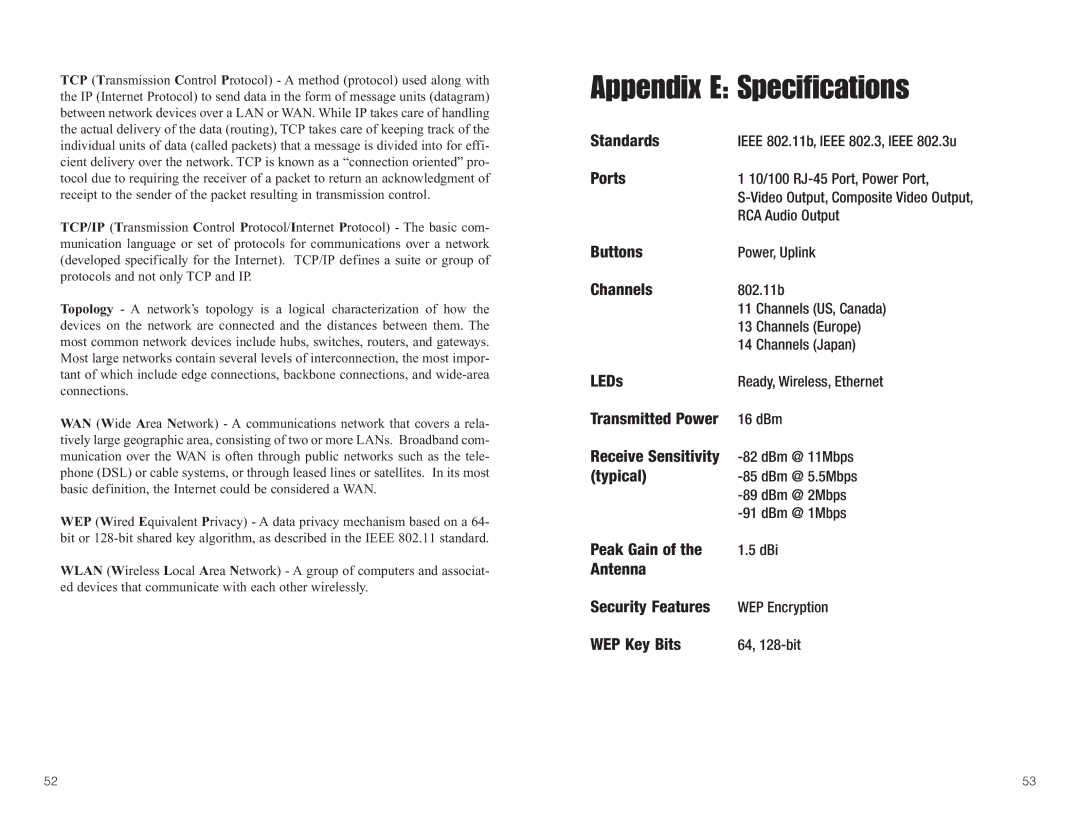TCP (Transmission Control Protocol) - A method (protocol) used along with the IP (Internet Protocol) to send data in the form of message units (datagram) between network devices over a LAN or WAN. While IP takes care of handling the actual delivery of the data (routing), TCP takes care of keeping track of the individual units of data (called packets) that a message is divided into for effi- cient delivery over the network. TCP is known as a “connection oriented” pro- tocol due to requiring the receiver of a packet to return an acknowledgment of receipt to the sender of the packet resulting in transmission control.
TCP/IP (Transmission Control Protocol/Internet Protocol) - The basic com- munication language or set of protocols for communications over a network (developed specifically for the Internet). TCP/IP defines a suite or group of protocols and not only TCP and IP.
Topology - A network’s topology is a logical characterization of how the devices on the network are connected and the distances between them. The most common network devices include hubs, switches, routers, and gateways. Most large networks contain several levels of interconnection, the most impor- tant of which include edge connections, backbone connections, and
WAN (Wide Area Network) - A communications network that covers a rela- tively large geographic area, consisting of two or more LANs. Broadband com- munication over the WAN is often through public networks such as the tele- phone (DSL) or cable systems, or through leased lines or satellites. In its most basic definition, the Internet could be considered a WAN.
WEP (Wired Equivalent Privacy) - A data privacy mechanism based on a 64- bit or
WLAN (Wireless Local Area Network) - A group of computers and associat- ed devices that communicate with each other wirelessly.
Appendix E: Specifications
Standards | IEEE 802.11b, IEEE 802.3, IEEE 802.3u |
Ports | 1 10/100 |
| |
| RCA Audio Output |
Buttons | Power, Uplink |
Channels | 802.11b |
| 11 Channels (US, Canada) |
| 13 Channels (Europe) |
| 14 Channels (Japan) |
LEDs | Ready, Wireless, Ethernet |
Transmitted Power | 16 dBm |
Receive Sensitivity | |
(typical) | |
| |
| |
Peak Gain of the | 1.5 dBi |
Antenna |
|
Security Features | WEP Encryption |
WEP Key Bits | 64, |
52 | 53 |
